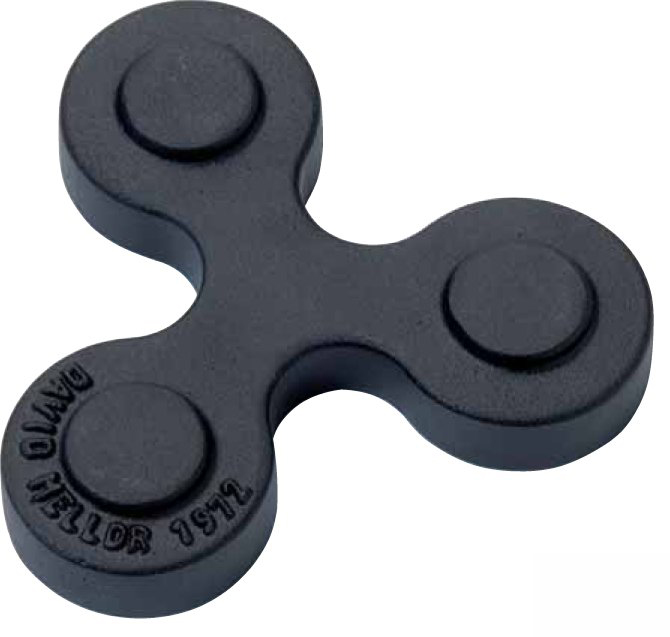One of the most abundant elements on the planet – and in the universe – and one of the oldest in production, iron is also still one of the most widely used materials. Its defining moment in history occurred when human evolution was still characterized by our application of materials, when iron marked the point in history that, through the forming of this ductile material, we were able to develop new tools to transform the world. However, beyond its use as the basis for steel, there are a limited number of applications today where a designer would specify iron in its raw form.
In its raw form, iron can be processed as castings or as wrought iron. Its properties vary depending on the grade but wrought iron – a term to describe the process of ‘working’ or forming the metal – is generally tougher and less brittle than cast iron. However, it does come in a variety of forms, such as pig iron, the main form of cast iron. Others include grey iron, ductile iron, white iron, compacted graphic iron, malleable iron and high alloy irons. One key additive that is used to affect the properties of iron is carbon, which is used to make steel. As a rule, the higher the carbon content the more brittle it becomes.
Culturally, this lustrous grey metal is perceived as being a crude, unrefined material. Not used for beauty but to deliver performance and to exploit its substantial weight. Its rough grey surface establishes it as a material for industry.
Image: David Mellor’s Cast Iron Candlesticks

There are vast differences in the properties of iron depending on its form and how it is processed
•In its pure form it is very ductile, corrodes easily and is chemically reactive
•Good compression strength
•High stiffness
•Magnetic
•Low melting temperature: 1538˚C (2800ºF)
•Recyclable
Sources
According to the US Geological Survey in 2011, world steel consumption was expected to be 1,398 million tonnes. China is responsible for almost half of the world’s iron production, which in 2011 was 700,000,000 tonnes.
Cost
Price is variable depending on type, but in general iron is the least expensive metal.
Sustainability issues
Iron is one of the most abundant of Earth’s elements. However, the process of extracting the ore from the Earth and the use of heat to transform it are the main considerations in relation to environmental impact.
Production
The relatively low melting temperature of iron makes it suitable for a range of production volumes, from small one-off pieces made of wrought iron to larger production runs that use casting methods to produce parts. As a relatively brittle material, one of the main considerations during production is to avoid thin profiles or sharp corners, which would make the iron prone to breaking.
Typical applications
Cast iron was used in everything that drove the industrial revolution, such as bridges, construction (the Eiffel tower is made from wrought iron). factory machinery and transportation. Today, it’s used for cooking pans and manhole covers and, as any child who remembers the fun science experiments will know, magnetic iron filings. Wrought iron dates back to much earlier times and was used by the Romans. Iron is an essential part of our bodies.
Derivatives
–Anthracite iron (carbon)
–Cast iron (carbon)
–Pig iron (carbon)
–Wrought iron (carbon)
| + | – |
|
–Versatile processing –Low cost –Very strong –Recyclable |
–Mining causes significant environmental impact –Relatively brittle –Poor corrosion resistance |
